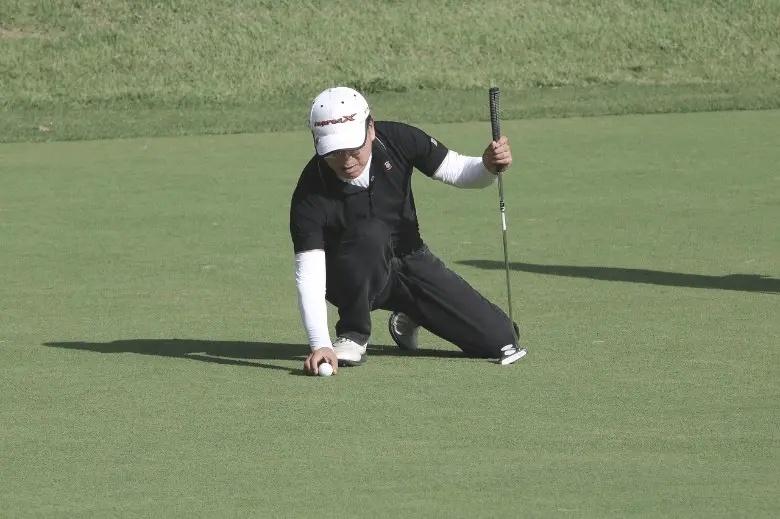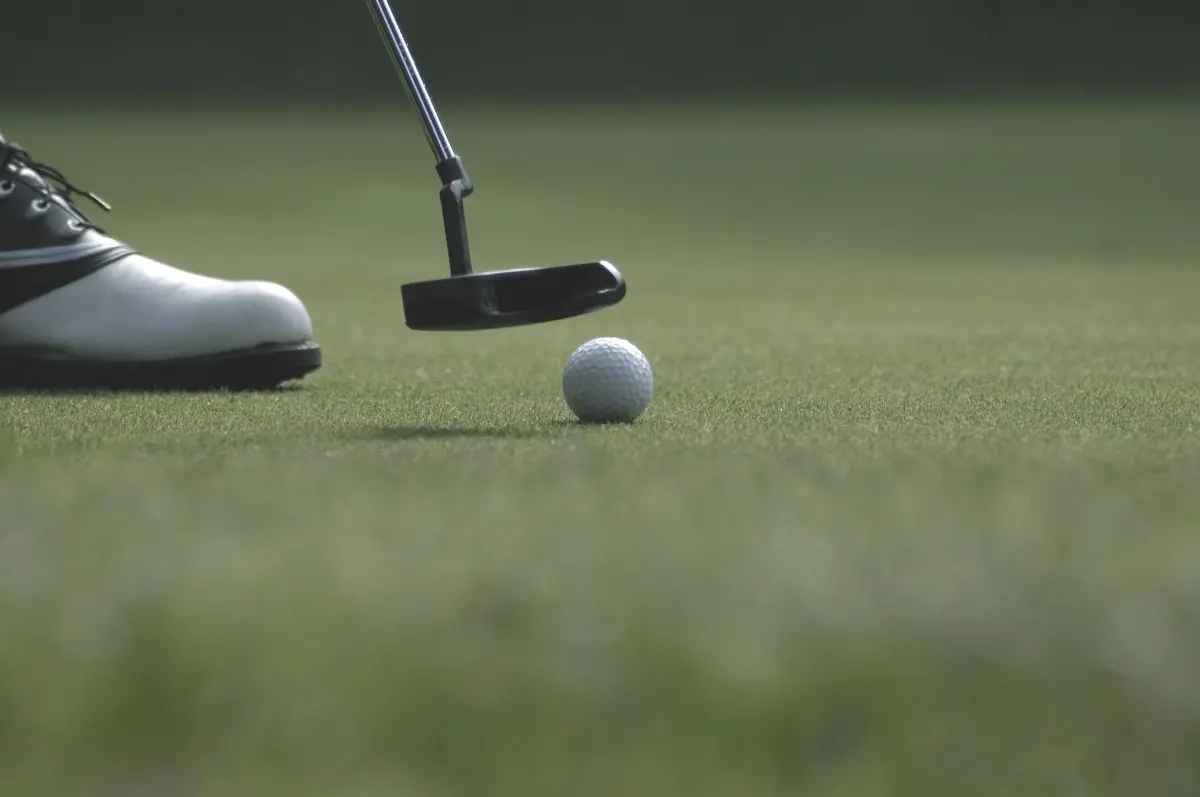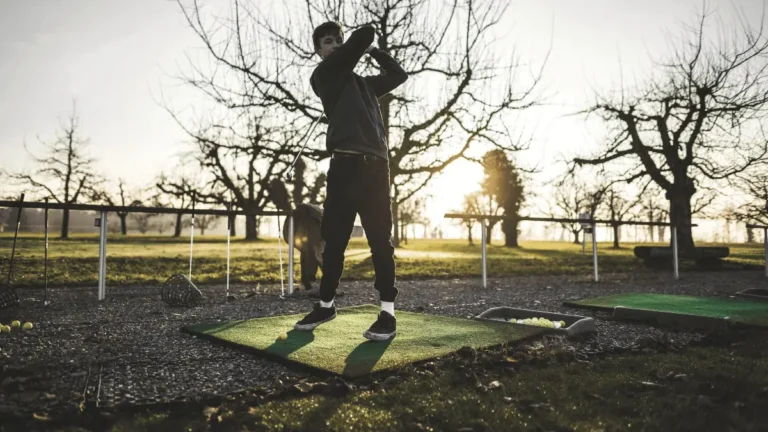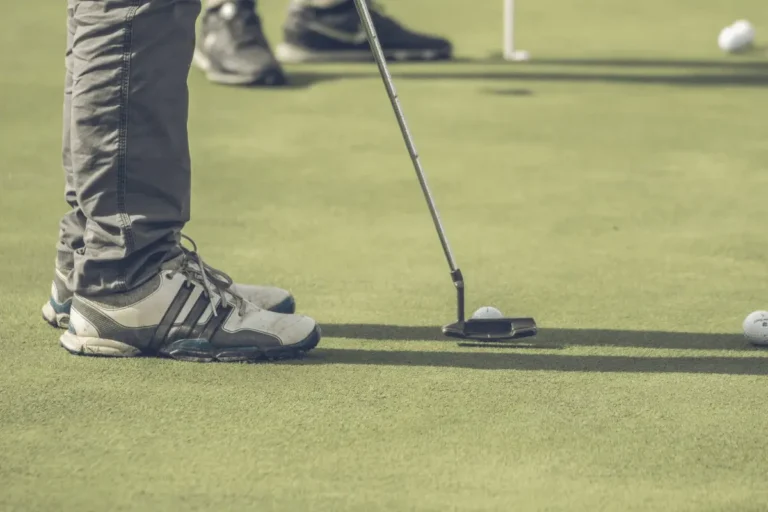The Best golf handicaps tips every golfer needs to know
When I started playing golf, I made sure I bought myself the clubs, the clothing, and enough balls to get me started. I knew little about golf handicaps though, which were introduced to make the game fairer.
Golf handicaps allow people of all ages and abilities to play the game we all love together. I’d wager that golf is one of the only sports where players of mixed ability, age, sex, and so on compete on a level playing field. Perhaps this is one reason why golf is so popular across the world.
In this article, I’ll be going over golf handicaps in depth including what they are, how they are calculated, the governing bodies that set handicaps, how to calculate your handicap and much more.
What Is a Golf Handicap?
Golf handicaps can be a difficult concept to fully grasp, especially when you’re new to the sport. But as we said above, in essence, a golf handicap keeps games fair by leveling the playing field.
You can think of golf handicaps as numerical measurements that indicate a golfer’s potential to score well (a low number of shots taken) when playing a round of golf. Handicaps range from 0 to about 40, although traditionally, this has differed between countries and genders.
However, the United States Golf Association (USGA) has been working with other international golfing bodies with the aim of introducing a new World Handicap System (WHS). The newer, more inclusive system has a planned commencement date of January 2020.
Why Do We Need Golf Handicaps?
You can’t really play golf in the modern era without knowing your handicap. You’ll find that people on the course casually discuss their handicaps—and tactics for changing them—regularly. Handicaps also offer a quick understanding of how skilled a player is.
Imagine if every time you played a round of club golf, the players who have played the longest win conclusively. It wouldn’t be anywhere near as much fun! Handicaps make golf more interesting, inclusive and challenging.
A History of Golf Handicaps
Golf handicaps were first introduced in the UK in the 17th century because experienced players were winning every match. Since there were few players in the game’s early days, it was difficult to find competitors of the same ability to enjoy a close, competitive game.
To address this, players devised a system whereby weaker players were allowed extra shots to make the game fairer. As you can imagine though, the rules were a lot more flexible when the handicap system first came into play compared to today.
What Is a Good Handicap?
In simple terms, the lower the handicap, the better the player. Highly skilled golfers have a handicap of zero, also known as a ‘scratch,’ which generally means this player is either exceptional or a professional golfer.
As I’ll explain in more detail below, a low handicap, which indicates a very good golfer, is 10 or below. However, everyone has to start somewhere and it’s important to remember that all the world’s best golfers had a high handicap to begin with!
With that in mind, a good handicap differs from player to player and is very individual.
How Does a Golf Handicap Increase or Decrease?

A recognized USGA handicap is reviewed every two weeks to a month. These very accurate handicaps are given based on a player’s current form during the golfing season.
As you can imagine, because your handicap is calculated according to form, it can fluctuate based on many factors. External considerations, such as the weather, can even impact your handicap. Injury and the number of rounds played are also variables that may cause an adjustment.
Handicaps can increase when a player finishes above a handicap category by an amount that exceeds the buffer zone of their personal handicap. Although players are often looking to lower their handicaps so that they can impress other players, an accurate handicap matters so everyone gets the best chance of winning their next game.
The Brand New R&A World Handicap System
January 2020 saw the introduction of a Royal & Ancient Golf Club of St. Andrews (R&A) World Handicap System (WHS). According to the R&A, the aim is to introduce a fairer, globally acceptable method of assessing golf handicaps.
Press releases from the WHS state the changes were developed in unison with the USGA and that the new system is applicable from January 2020 in the US with other nations to follow suit.
The WHS has been developed with the following three core principles:
- Inclusive and accessible
- Consistent and portable
- Modern and adaptable
Want to delve into the new rules a little deeper? let’s explore some FAQs in detail.
Golf Handicap Categories
As a rule of thumb, you can distinguish between an amateur and a casual player by their handicap category. There are four different categories in common use: high, mid, low, and scratch. Let’s take a look at each:
High Handicaps
All new players, beginners, and people who play golf as a Sunday hobby tend to have high handicaps. If this is you, don’t fret, everyone has to start somewhere and the more time spent playing golf, the quicker your handicap will come down.
Handicaps higher than 20 are normally classified as high handicaps, although the exact number can vary depending on factors such as gender and age.
Mid Handicaps
Mid handicaps generally state double-digital players between 10 and 20. People with mids are considered average players.
Low Handicaps
Low handicaps are what all golfers aspire to. Players with handicaps under 10 tend to be more consistent and skilled. On the course, they’re recognized as good to excellent golfers.
Scratch Golfers
The holy grail of golf handicaps, scratch golfers are players with a handicap of zero. If you’re a scratch golfer, handicaps don’t really apply and those at scratch are professionals at the top of their game. Think Tiger Woods, Jordan Speith, and the Brooks Koepkas of the world.
How Do I Get a Golf Handicap?

There are two ways to figure out your golf handicap. You can take the traditional route and head to your local golf course or you can work it out online. Let’s go over each now.
The Traditional Method
Once you’ve played a few casual games and have stats and figures to share, a senior member of your club can help you crunch the numbers and work out your handicap.
Benefits
- A more respected and recognized method of calculating a handicap
- Allows you to play club games at your local courses and compete in USGA events
- Considered the best method for a traditional golfer
Drawbacks
- Your local club may charge you up to $75 for the assistance
The Online Method
Several websites can calculate your handicap so you don’t have to. You will, however, need a lot of data and information from your past 20 rounds of golf to receive an accurate handicap.
Benefits
- Lots of websites are free or cheap to use
- This method suits casual players where a handicap is just a number. Plus, these players won’t have to fork out the club fee
- Very simple and quick provided you have the data handy
Drawbacks
- Some websites are not USGA respected and thus might not be as legitimate
- May not be able to compete in some golfing competitions
If you opt for the online route, be wary of the website you use and its legitimacy. Particularly if you want an accurate handicap number. After all, it’s worth spending some time on your handicap figure and increasing your chances of a win.
How to Calculate and Deal With Your Golf Handicap According to the WHS
Golf handicaps are calculated with the following formula:
(Score – Course Rating) x 113 / Slope Rating
To accurately gauge your ability and averages, you will need data from around 20 of your previous rounds, not just the last three games you played well in!
Course ratings and slope ratings are also important in terms of the difficulty of the games you’ve played and the resulting handicap. Skip this info and your handicap can misrepresent your skill level in either direction.
Usually, you can ask someone at the course what the course and slope ratings are. Otherwise, you can probably find the info online or by asking around your golfing buddies.
Just in case you’re inclined to cheat a little with the figures, remember that it’s very important to have a fair handicap so all golfers can get the most out of a game.
To illustrate the importance of factoring course difficulty into your individual handicap, let’s say that Sam and Chris both averaged 105 strokes over 18 holes on two different courses in Alberta. But Sam played a notoriously easier course than Chris. This means Chris is more skilled than Sam on the average US golf course in the US.
How Can I Lower My Handicap?
There are many recommendations to improve your golfing ability and become more experienced. Here are some top tips:
Choose the Right Equipment or Upgrade Your Existing Equipment
There is an old saying that a bad sportsman will always blame their equipment. However, in some cases, the kit can be at fault, especially if you are currently using an old set of borrowed clubs.
You might discover that your game improves drastically if you invest in some new golf clubs and balls. Good gear can help increase your confidence. I recommend replacing your long irons, as this can increase distance and accuracy on the fairway. Here are some of the best hybrid clubs on the market:
- Cobra 2018 King Utility Hybrid Iron Black
- Lazrus Premium Hybrid Gold Irons
Draw Straight Lines on Your Ball
This is an easy trick to make sure you’re focused on driving straight. Lines enable you to clearly see the best place is to hit the ball to send straight down the fairway. Basic, yet effective.
Use Gloves for a Better Golf Grip
Invest in some new, leather golf gloves to improve your grip and get a better swing. Here are some of our recommended gloves:
- Titleist Men’s Perma Soft Golf Glove
- Callaway Golf Men’s OptiColor Leather Glove
Practice Makes Perfect…

As basic as it sounds to say, improving quickly often comes down to getting out there and working at your game. Players who play weekly are more likely to improve than those who only play once a month. So, what are you waiting for?
Weekly Golf lessons With Someone More Experienced
Getting golf lessons doesn’t need to be as expensive as it sounds. Even if you ask a friend with a low handicap to help you improve your game, you’re taking steps to lower your own handicap. You don’t need to break the bank to better your technique.
Improve Your Putting Game
Someone wise once told me that “driving is for show, putting is for the dough.” Having a strong and powerful drive is great but putting is where the real skill is and can make or break a game.
Putting greens are the most pressured part of a match and your performance on the greens can be improved if you take time to practice. It’s an essential part of becoming a skilled golfer with a low handicap.
Some of our recommended putters:
- Wilson Men’s Augusta Golf Putter
- Pinemeadow Golf Men’s PGX Putter
Track Your Progress and Appreciate How Far You’ve Come
It’s par for the course that improving at any sport is time-consuming. You need to be patient before you see improvements and a dramatic lowering of your handicap. Make sure you set yourself realistic golfing targets and track the progress you make.
Overall
Handicaps are a universal golfing term and a way to show how good a golfer is. They keep the game fair and it would be difficult to enjoy the game without a handicap system in place.
In golf, the most experienced players tend to have a lower handicap. However, there is no single ‘best handicap’ as many different factors can affect this and your handicap can frequently change. Generally, if you’re boasting a handicap between 10 and 20, you are doing very well.
With the new WHS introduced globally this year, it’s an exciting time to be a golfer. So, what are you waiting for? Practice makes for a lower handicap so get out on the course!







